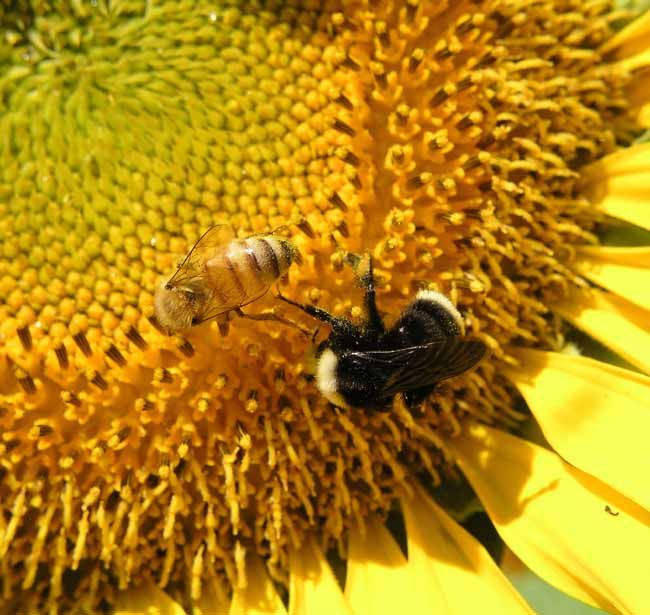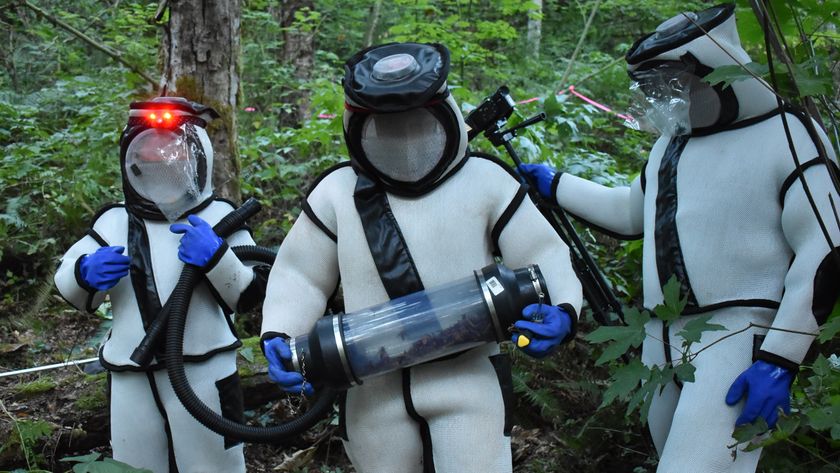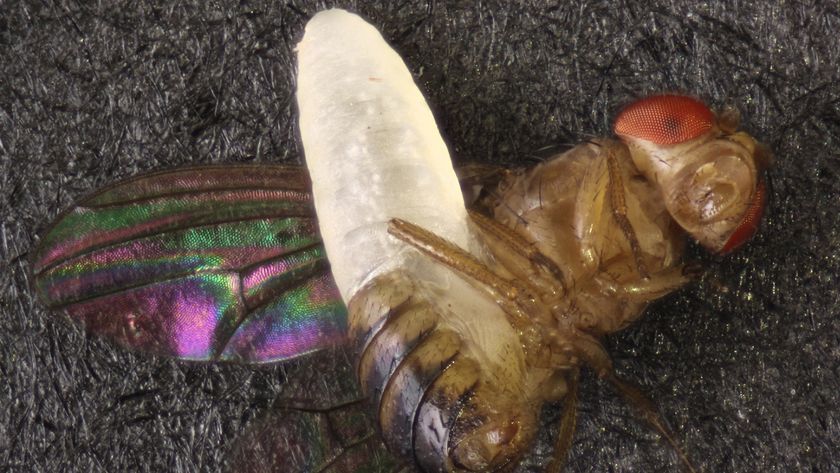Honeybee Buzzes Can Warn Against Toxins

Honeybees could be useful as highly sensitive, living alarm systems, say scientists who have discovered that the bees' buzz changes when they are exposed to different types of chemicals.
For centuries, beekeepers have known that the buzzing of a beehive changes when the queen bee is removed, and now it has been shown that this behavior may help soldiers detect toxic chemicals such as those potentially used in terror attacks and help beekeepers monitor the health of their hives.
Toxin detectors
The U.S. Army was interested in finding a way to quickly detect a poisonous cloud of gas, and honeybees were a perfect candidate because "[humans] and honeybees share a common sensitivity to many of the same chemicals," said Jerry Bromenshenk of Bee Alert Technology, Inc.
Bromenshenk and his colleagues exposed colonies of bees to various toxins and found that they could hear a change in the insects' buzzing.
"We found bees respond within 30 seconds or less to the presence of a toxic chemical," said Bromenshenk, also with the University of Montana. "But the real surprise was that the sounds bees produce can actually tell what chemical is hitting them."
The researchers couldn't actually hear the unique responses to each chemical, so they devised a more sensitive detection system (essentially a human hearing aid placed in the hive). Using artificial neural networks, the same technology behind voice recognition software, they could analyze the buzzing to determine the specific buzz for each chemical.
Sign up for the Live Science daily newsletter now
Get the world’s most fascinating discoveries delivered straight to your inbox.
Bees produce their familiar buzzing sound by vibrating their wings and bodies and pushing air through spiracles--tiny airways used for respiration.
A hive recycles its air every three minutes and the bees never sleep, so they could provide 24-hour air monitoring.
Better beekeeping
Bees' buzzing also changes when they are afflicted with natural maladies, like the parasitic varroa mites or foul brood, a spore-forming bacterium that kills young larvae.
For commercial beekeepers, who may have thousands of colonies, it can be difficult to constantly inspect the hives for signs of pests , which is where Bromenshenk's work comes in:
"We can tell not only whether the colony has mites or not," he said, "but also the level of infestation they have. The sounds they make change with every stressor in characteristic ways."
Bromenshenk says he and his colleagues hope to translate the technology into a handheld device that could instantly detect an infestation. Such a device would be particularly critical because honeybee populations in the U.S. have been dwindling, and these insects are essential to pollinating many crops worldwide, including coffee plants and oranges.

Andrea Thompson is an associate editor at Scientific American, where she covers sustainability, energy and the environment. Prior to that, she was a senior writer covering climate science at Climate Central and a reporter and editor at Live Science, where she primarily covered Earth science and the environment. She holds a graduate degree in science health and environmental reporting from New York University, as well as a bachelor of science and and masters of science in atmospheric chemistry from the Georgia Institute of Technology.











